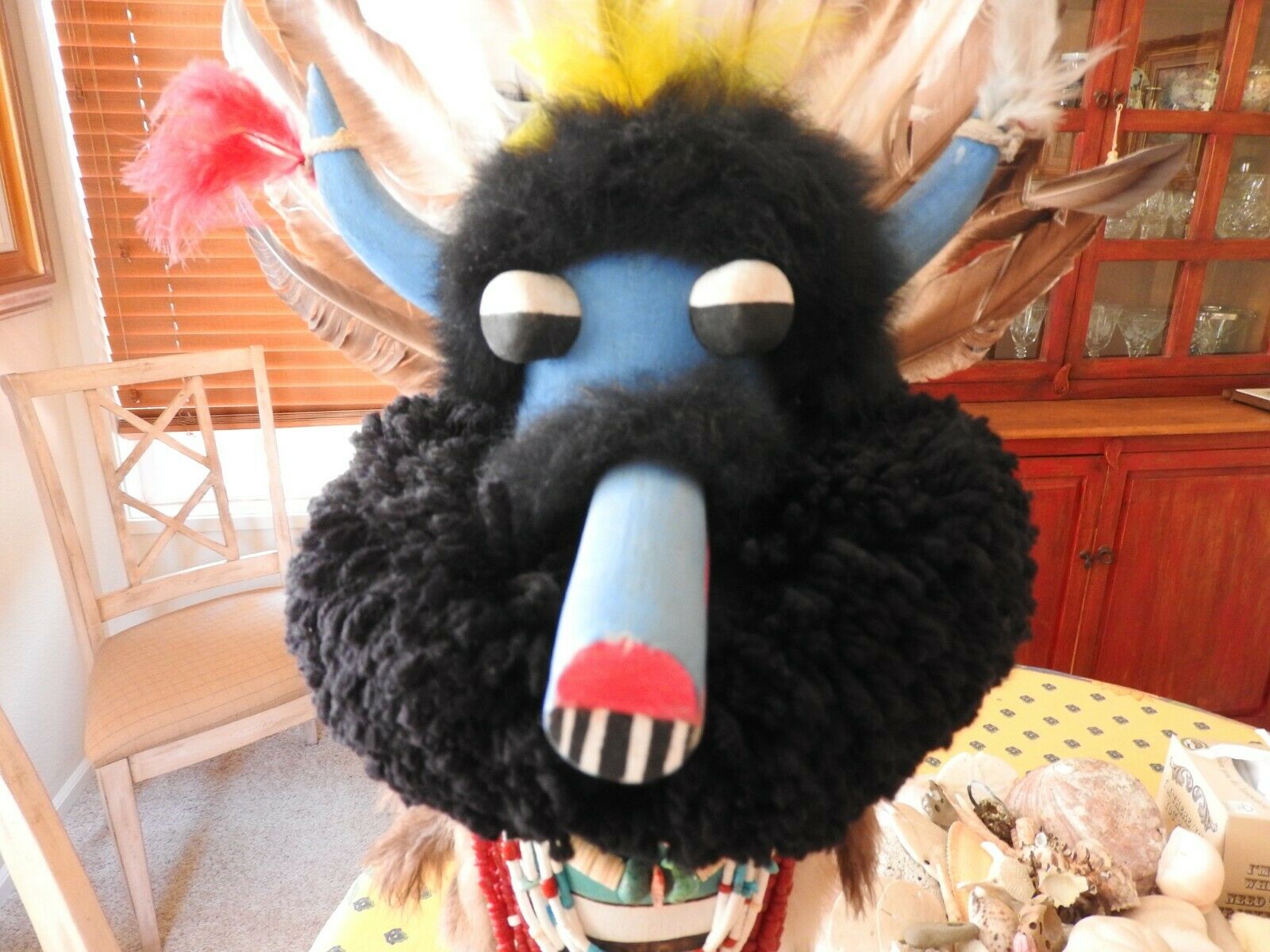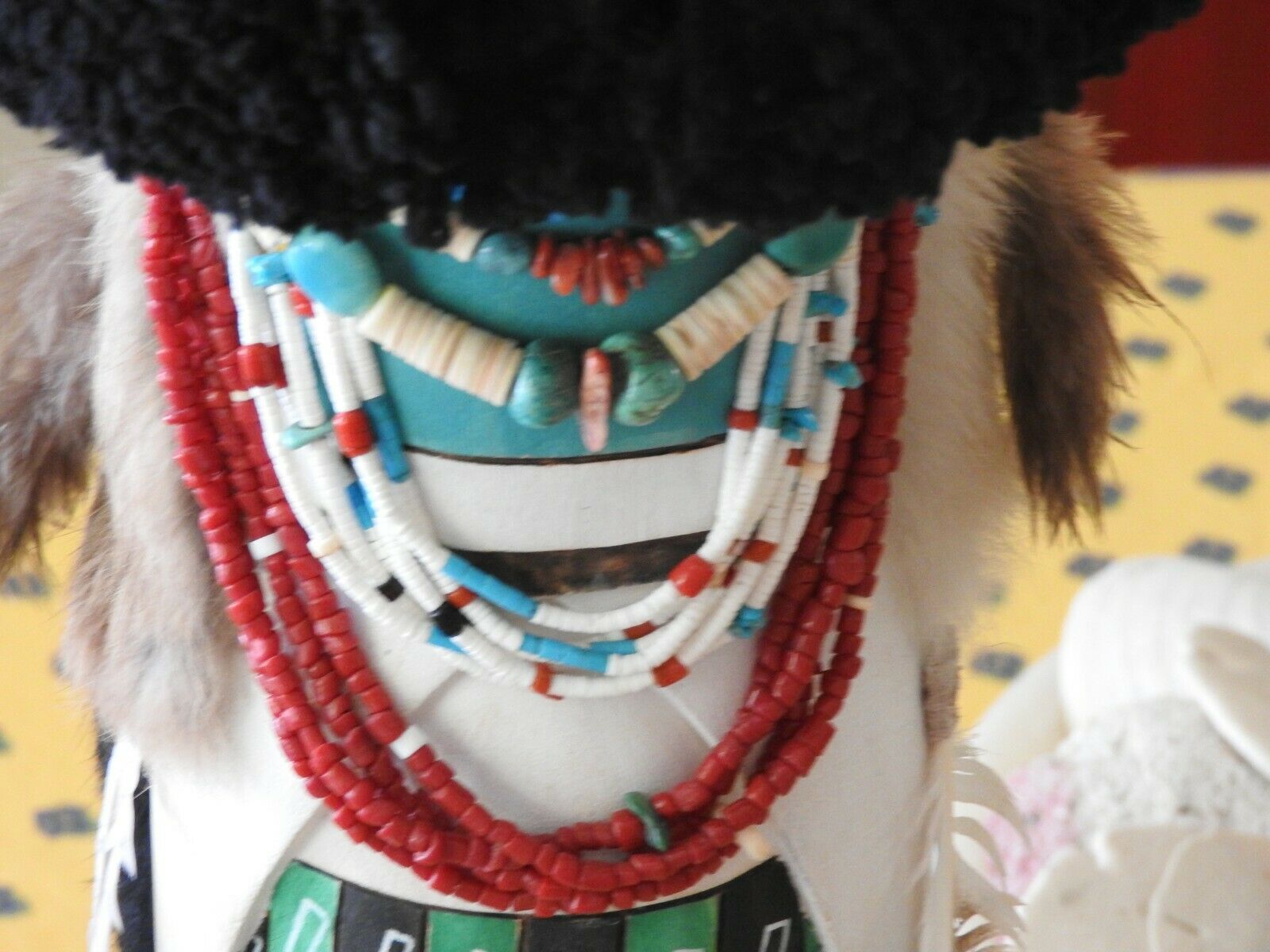-40%
ZUNI Kachina Shálako Doll
$ 462
- Description
- Size Guide
Description
ZUNI KACHINA REPRESENTING THE KACHINA.This hand-carved mid20th C version of the Shalako Katsina is rare and is a very good representation of the real Shalako (see below). The hand-made clothing is embellished with fine felt applique’ work and black germantown wool yarn tassels - all to simulate embroidery normally applied to mantas. A necklace of coral and turquoise colored beads hangs from the neck as do faux fox fur pendants. Commercial black yarn ruff surrounds the neck. Felt adornments cover the shelf making a kachina mask against a brightly colored orange background. Just a one-of-a-kind Zuni Katsina that stands 25” to the top of the headand 31” to the tip of the last feather!
ZUNI Shálako Kachina Doll
In the tradition of the Zuni people of the American Southwest, Shalakorefers both an annual winter solstice ceremony, as well as to spirit deitiesperceived as giant, beaked messengers to the gods. Six Shalako messengers, onefor each cosmic direction (the four cardinal directions as well as one forabove and one for below), carry prayers from the Zuni people to the gods allyear long. After the fall harvest, close to the winter solstice, as the yeartransitions from old to new, the Shalako ceremony takes place. It includesdances, prayers, remembrance of ancestors, and ritual blessings for health andfertility. The Shalako messengers, personated by trained dancers, are depictedas very tall kachina who accompany the personated Council of the Gods in aceremony that lasts all evening.
The participatingmembers of the Zuni Council of Gods and their retinue enter Zuni on the eveningof the Shalako ceremony in a very specific order. First enters Shulawitsi (FireGod), accompanied by a ceremonial "father" who has tended a sacredjuniper fire in the days prior to the ceremony. Second enters Sayatasha (RainGod from the North), wearing a mask with a turquoise horn sweeping out from theright side of his face. Third is Hu-tu-tu (Rain God from the South), followedby two Yamukato protector warriors, one from the East and one from the West.Two Salamobia enforcers with their beaked masks, ruffed necks, and yucca whipsbring up the rear, followed finally the giant Shalako. The six Shalako figuresenter the pueblo at sunset, accompanied by their attendants, and tower over theattendees and participants, as their giant beaked masks make these dancers riseto about nine feet tall.
Preparations for the nextShalako begin as soon as the current year’s celebration is over, and involvethe entire community. On the one hand, the ceremony marks several days ofconcentrated spiritual observance and ritual practice; on the other, Shalakoremains a vital and active presence in the Zuni pueblo’s daily life all yearlong.




















